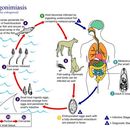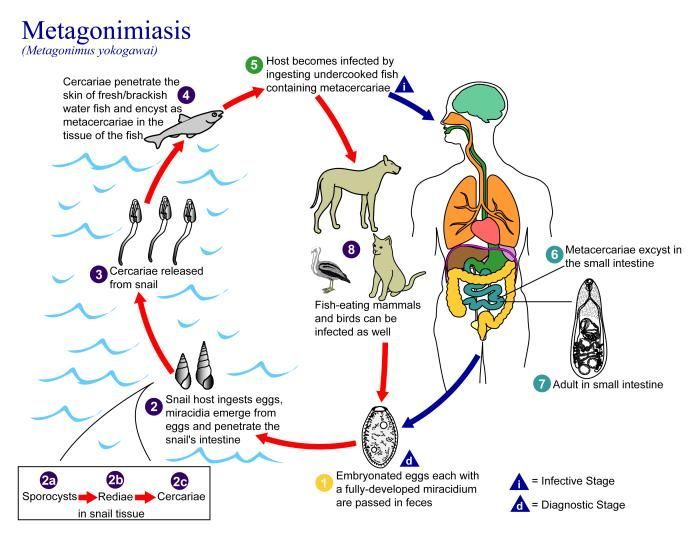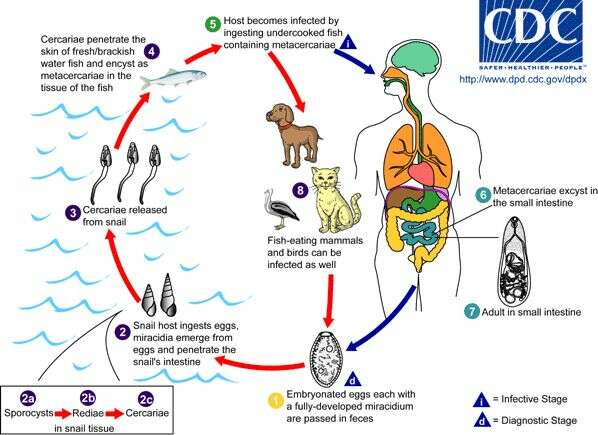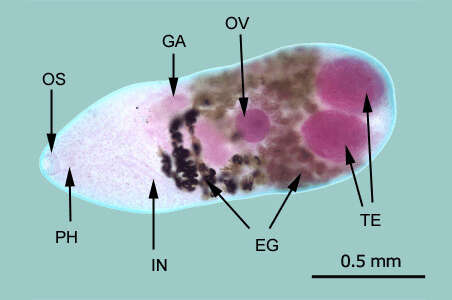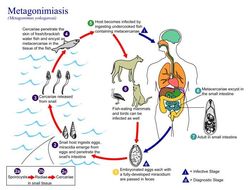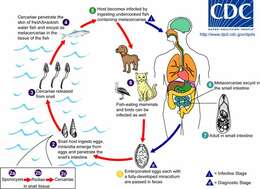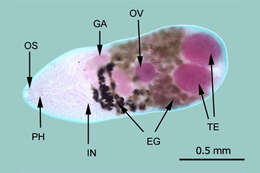Life cycle of the trematode Metagonimus yokogawai Adult Metagonimus yokogawai release fully embryonated eggs, each with a fully-developed
miracidium, and eggs are passed in the host’s feces (1). After ingestion by a suitable snail (first intermediate host), the eggs hatch and release
miracidia, which penetrate the snail’s intestine (2). Snails of the genus Semisulcospira are the most frequent intermediate host for M. yokogawai. The
miracidia pass through several developmental stages in the snail:
sporocysts (2a),
rediae (2b), and
cercariae (2c). Many
cercariae are produced from each
redia. The
cercariae are released from the snail (3) and encyst as
metacercariae in the tissues of a suitable fresh/brackish water fish (second intermediate host) (4). The definitive host becomes infected by ingesting undercooked or salted fish containing
metacercariae (5). After ingestion, the
metacercariae excyst, attach to the mucosa of the small intestine (6), and mature into adults (which measure only 1.0 mm to 2.5 mm by 0.4 mm to 0.75 mm) (7). In addition to humans, fish-eating mammals (e.g., cats and dogs) and birds can also be infected by M. yokogawai (8).From
Centers for Disease Control Parasites and Health website

